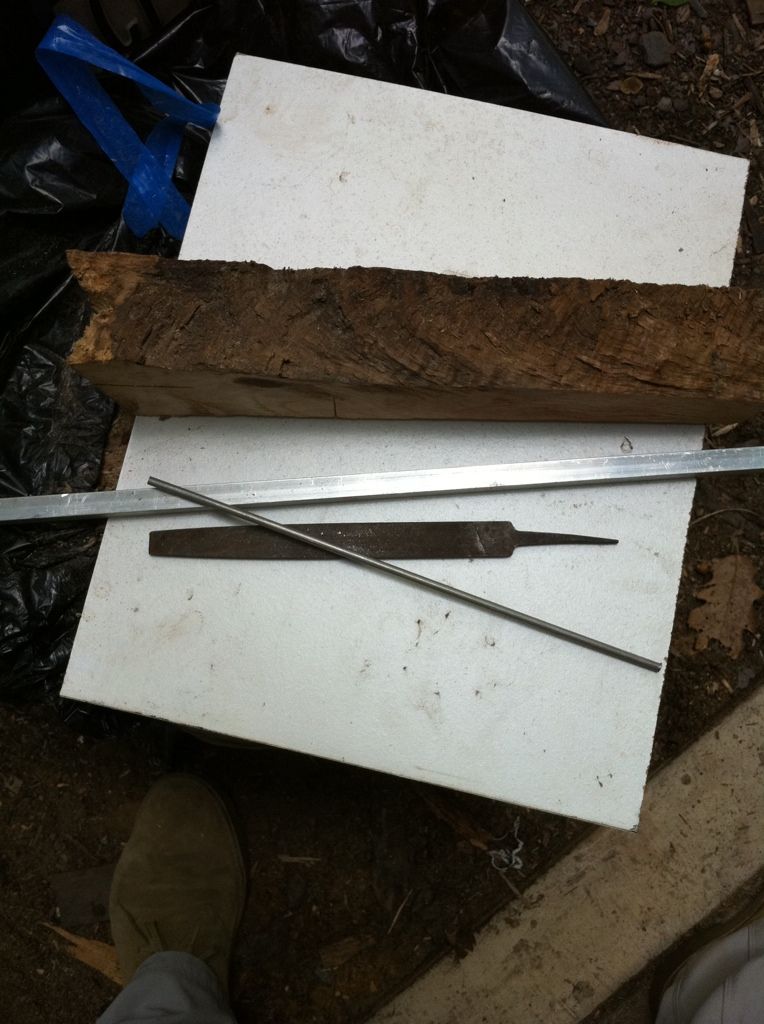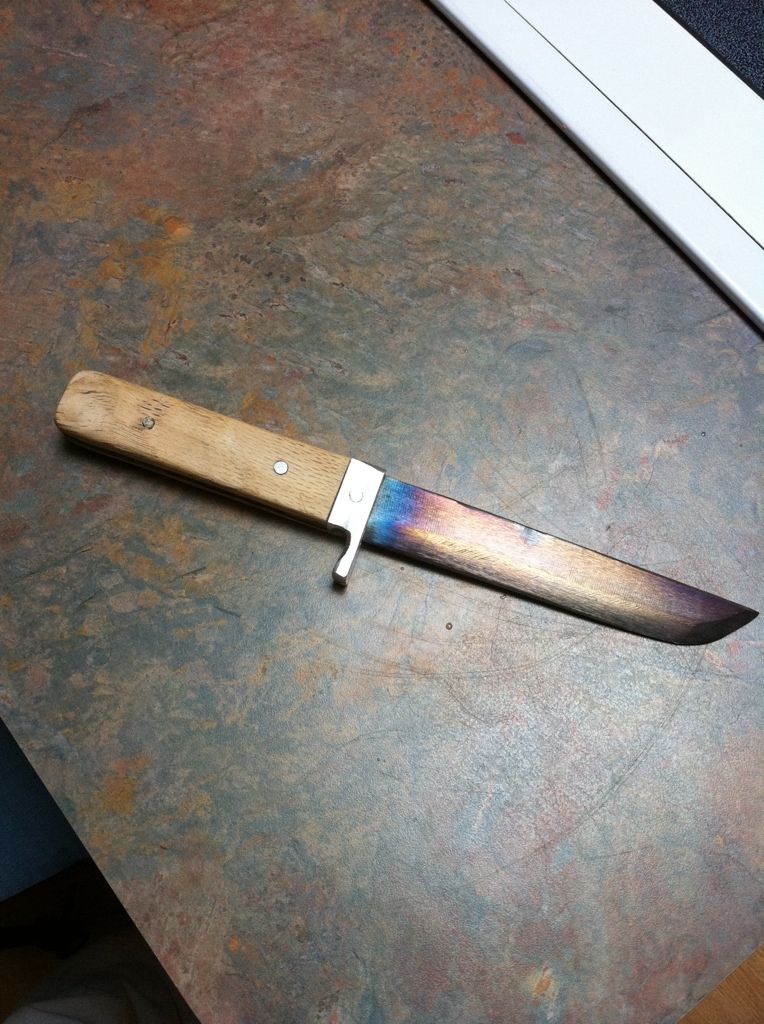no reason to turn it red or orange to fully anneal it so that it can be worked easily
just heat it slowly with your torch until it is fully dark blue and it will be a soft as it will ever get.
then grind it to shape by whatever means you have at your disposal, yes it will take a while but an angle grinder and the blade clamped down on a saw horse will make a much easier project of it.
after you get it to the shape you want, (make that 99%+ ) then it is time to reharden and temper the blade
you will need to bring it up to red, not orange
and by red that is in a relatively dark area, not out in the sun, if you are outside put the blade in a covered area like a 5 gallon bucket to shade it enough to see the color.
once red immediately dip it in motor oil, wearing gloves of course and hold it still, when i say dip it, i mean plunge it in point first and hold it there for a minute or better.
from there pull it out and further cool it in a bucket of water, to make it handy again.
now the blade will be as hard as glass and have a nice frosted grey appearance.
now time to temper it.
wait till momma has gone shopping and lay it on a piece of aluminum foil, on a cookie sheet in the oven.
i would bake the blade to 450F for an hour.
if you have not dipped the handle in the motor oil
it will be relatively soft and not likely to break during use.
if you have polished or shined up the blade prior to tempering in the oven you will be able to see the blade change colors, it should come out a very dark straw yellow to almost brown color.
i like my knives to be on the harder side, so if you want a tougher and less likely to break blade you can temper to a higher degree to where the color is more purplish.
there are a number of good books on handmade knives and blacksmithing at your local library, check out one and read up before you start... this will be a good project and if done right will last forever.
good luck
bob g






